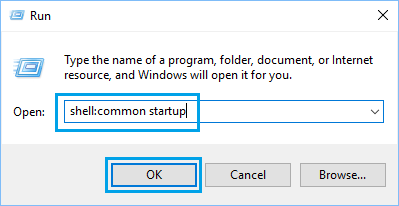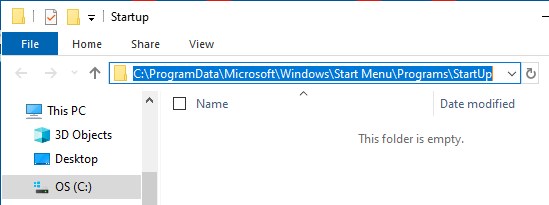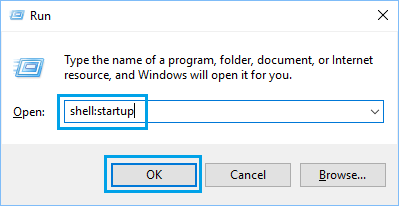If you are looking for a way to access the Startup Folder on your computer, it is likely that you want to add a shortcut to an App, Desktop program or File to the Startup Folder.
Adding a Shortcut to the Startup Folder makes that particular App, Desktop Program or File to automatically startup with the computer and become available for your immediate use.
Another reason for accessing the Startup folder would be to remove Shortcuts for Apps and programs that you do not want to automatically startup with the computer.
Access Startup Folder Location in Windows 11/10
Before going ahead with the steps to access the startup folder location, it is important to note that there are actually two Startup Folders on a Windows computer, located at System and Users Levels.
The System Level Startup Folder contains shortcuts to common applications used by all User Accounts and the User Level Startup Folder contains shortcuts for applications used by that particular User Account.
1. Access Common or System Level Startup Folder
You can follow the steps below to access the system level Startup Folder on a Windows computer.
1. Right-click on the Start button and click on Run.
2. Type shell:common startup and click on OK.

3. This will immediately take you to C:\ProgramData\Microsoft\Windows\Start Menu\Programs\StartUp, which is the Common Startup Folder on your computer.

2. Access User Level Startup Folder
You can access the current User Level Startup Folder on your computer by using the following steps.
1. Open the Run Command on your computer.
2. Type shell:startup and press the Enter key or click on OK.

3. This will take you to the Current User Level Startup Folder located at the following path: C:\Users\Username\AppData\Roaming\Microsoft\Windows\Start Menu\Programs\Startup.

As mentioned above, you can make any app, desktop program or file to automatically startup with the computer by placing a Shortcut to that app/desktop program in the User Level Startup Folder.
For the actual steps to add Apps or Desktop programs to the startup folder, you can refer to this guide: How to Add App or Program to Startup in Windows.